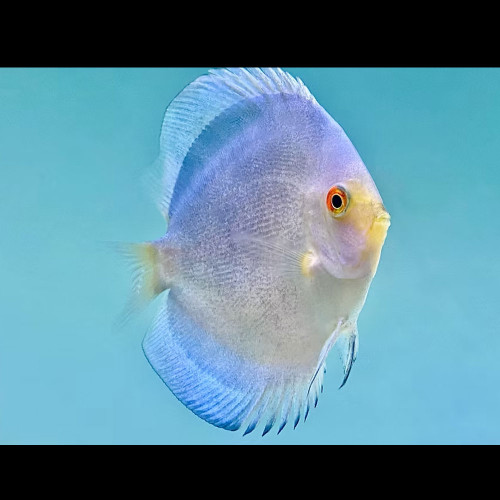Our Guide To Keeping Tiger Silver Dollar Fish
-
About Fish Species:
- Scientific name: Metynnis fasciatus
- Common name: Tiger Silver Dollar
- Family: Serrasalmidae
- Origin: Amazon and Paraguay River basins, South America
- Adult length: 14–16 cm
- Lifespan: 8–10 years
- Diet: Primarily herbivorous (plant-based foods)
- Care Level: Moderate
- Temperament: Peaceful, schooling
-
Tank Setup:
- Tank size: A minimum of 250–300 litres is recommended for a small group. These active swimmers need wide, open areas for movement.
- Decor: Include driftwood, smooth rocks, and hardy plants such as Java Fern, Anubias, or plastic/silk alternatives, as they may nibble softer plants.
- Lighting: Moderate lighting with some shaded zones created by floating plants to make them feel secure.
-
Water Parameters:
- Temperature: 24–28°C (75–82°F)
- pH: 6.0–7.5
- Hardness: Soft to moderately hard (4–12 dGH)
-
Filtration and Water Flow:
- Filtration: Use a strong, efficient filter to maintain pristine water quality—these fish produce a fair amount of waste.
- Flow: Gentle to moderate flow replicates their natural river environment.
- Maintenance: Regular water changes (30–40% weekly) help maintain stable conditions.
-
Diet:
- Main diet: Offer high-quality vegetable flakes or pellets, spirulina, and algae wafers.
- Fresh options: Provide blanched spinach, lettuce, cucumber, or courgette slices several times per week.
- Occasional treats: Supplement with frozen or live foods such as bloodworms or brine shrimp for variety.
-
Tank mates:
- Suitable companions: Peaceful medium-to-large fish such as larger tetras, rainbowfish, barbs (like rosy or denison barbs), and catfish species such as Corydoras or plecos.
- Avoid: Small fish that may be spooked, fin-nippers, or aggressive cichlids. Avoid tanks with delicate plants.
-
Behavior and Compatibility:
- Social nature: Tiger Silver Dollars are schooling fish and thrive best in groups of six or more. Lone individuals can become skittish.
- Temperament: Generally peaceful but may become territorial if crowded or underfed.
- Activity: Active midwater swimmers that prefer open areas; will occasionally nibble on plants as part of their diet.







